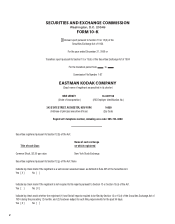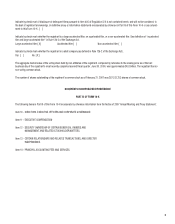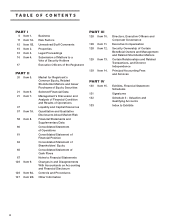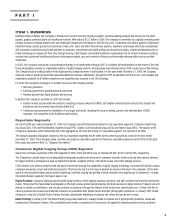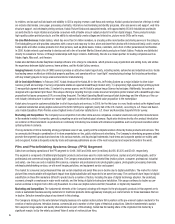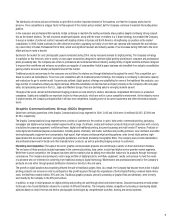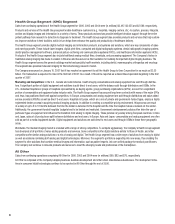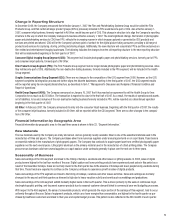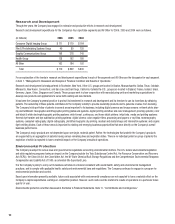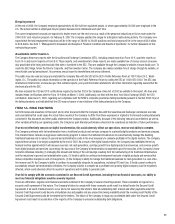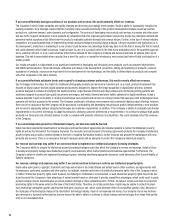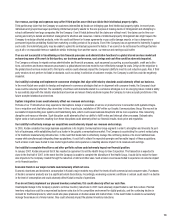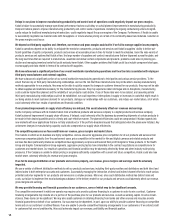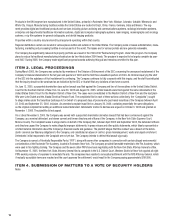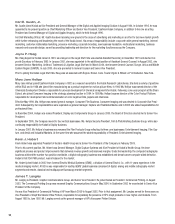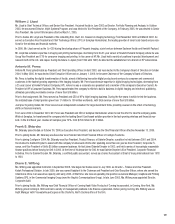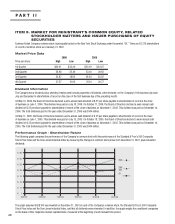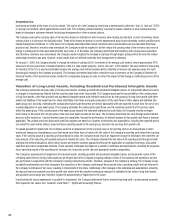Kodak 2006 Annual Report Download - page 19
Download and view the complete annual report
Please find page 19 of the 2006 Kodak annual report below. You can navigate through the pages in the report by either clicking on the pages listed below, or by using the keyword search tool below to find specific information within the annual report.
If we cannot effectively manage transitions of our products and services, this could adversely affect our revenues.
The industries in which Kodak competes are rapidly changing and becoming increasingly more complex. Kodak’s ability to successfully transition its
existing products to new offerings requires that the Company make accurate predictions of the product development schedule as well as volumes,
product mix, customer demand, sales channels, and configuration. The process of developing new products and services is complex and often uncer-
tain due to the frequent introduction of new products by competitors that offer improved performance and pricing. Kodak may anticipate demand and
perceived market acceptance that differs from the product’s realizable customer demand and revenue stream. Further, in the face of intense industry
competition, any unanticipated delay in implementing certain product strategies (including digital products, category expansion and digitization) or in
the development, production or marketing of a new product could decrease any advantage Kodak may have to be the first or among the first to market
and could adversely affect Kodak’s revenues. Kodak’s failure to carry out a product rollout in the time frame anticipated and in the quantities appropri-
ate to customer demand, or at all, could adversely affect future demand for the Company’s products and services and have an adverse effect on its
business. This risk is exacerbated when a product has a short life cycle or a competitor introduces a new product just before Kodak’s introduction of a
similar product.
Our results are subject to risks related to our significant investment in developing and introducing new products, such as consumer inkjet printers
and CMOS semiconductors. These risk include: difficulties and delays in the development, production, testing and marketing of products; customer
acceptance of products; resources we must devote to the development of new technology; and the ability to differentiate our products and compete
with other companies in the same markets.
If we cannot effectively anticipate trends and respond to changing customer preferences, this could aversely affect our revenues.
Due to changes in technology, the market for traditional photography products and services is in decline and, as a result, product development has
focused on digital capture devices (digital cameras and scanners) designed to improve the image acquisition or digitalization process, software
products designed to enhance and simplify the digital workflow, output devices (thermal and inkjet printers and commercial printing systems and
solutions) designed to produce high quality documents and images, and media (thermal and silver halide) optimized for digital workflows. Kodak’s
success depends in part on its ability to develop and introduce new products and services in a timely manner that keep pace with technological devel-
opments and that are accepted in the market. The Company continues to introduce new consumer and commercial digital product offerings, however,
there can be no assurance that the Company will be successful in anticipating and developing new products, product enhancements or new solutions
and services to adequately address changing technologies and customer requirements. In addition, if the Company is unable to anticipate and develop
improvements to its current technology, to adapt its products to changing customer preferences or requirements or to continue to produce high quality
products in a timely and cost-effective manner in order to compete with products offered by its competitors, this could adversely affect the revenues
of the Company.
If we cannot adequately protect our intellectual property, our business could be harmed.
Kodak has made substantial investments in technologies and has filed patent applications and obtained patents to protect its intellectual property
rights as well as the interests of the Company licensees. The execution and enforcement of licensing agreements protects the Company’s intellectual
property rights and provides a revenue stream in the form of royalties that enables Kodak to further innovate and provide the marketplace with new
products and services. There is no assurance that such measures alone will be adequate to protect the Company’s intellectual property.
Our revenue and earnings may suffer if we cannot continue to implement our intellectual property licensing strategies.
The Company’s ability to execute its intellectual property licensing strategies could also affect the Company’s revenue and earnings. Kodak’s failure
to develop and properly manage new intellectual property could adversely affect market positions and business opportunities. Furthermore, the
Company’s failure to identify and implement licensing programs, including identifying appropriate licensees, could adversely affect the profitability of
Kodak’s operations.
Our revenue, earnings and expenses may suffer if we cannot continue to license or enforce our intellectual property rights.
Kodak relies upon patent, copyright, trademark and trade secret laws in the United States and similar laws in other countries, and agreements with
its employees, customers, suppliers and other parties, to establish, maintain and enforce its intellectual property rights. Any of the Company’s direct
or indirect intellectual property rights could, however, be challenged, invalidated or circumvented, or such intellectual property rights may not be suf-
ficient to permit the Company to take advantage of current market trends or otherwise to provide competitive advantages, which could result in costly
product redesign efforts, discontinuance of certain product offerings or other competitive harm. Further, the laws of certain countries do not protect
proprietary rights to the same extent as the laws of the United States. Therefore, in certain jurisdictions, Kodak may be unable to protect its propri-
etary technology adequately against unauthorized third party copying or use, which could adversely affect its competitive position. Also, because of
the rapid pace of technological change in the information technology industry, much of our business and many of our products rely on key technolo-
gies developed or licensed by third parties, and we may not be able to obtain or continue to obtain licenses and technologies from these third parties
at all or on reasonable terms.


